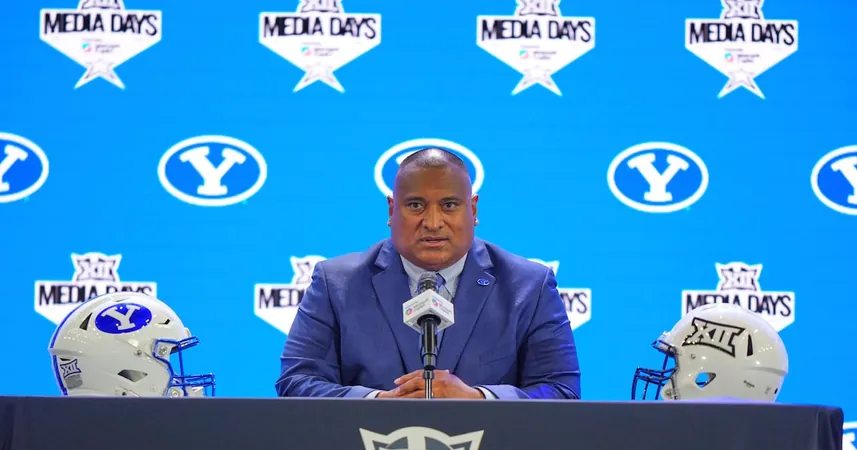
The Heart-Wrenching Search for Gaza's Missing: The Ongoing Tragedy of Loss and Despair
2025-01-23
Author: Ting
In the aftermath of devastation, the remnants of life lie scattered across Gaza. A child's colorful backpack, abandoned shoes, and mangled household items tell silent stories of lives disrupted. As rescue teams sift through the debris, they encounter haunting reminders of lost family members among the rubble—snippets of clothing, shattered glass, and the pervasive smell of death marking the locations where loved ones may lie.
Haitham al-Homs, director of Emergency and Ambulance Services in Rafah, reported a chilling surge in calls from families desperate to locate their missing relatives since the recent ceasefire. With the Palestinian health authorities estimating around 10,000 individuals unaccounted for, the search is fraught with anguish. Where tangible evidence like clothing is absent, rescue teams are compelled to rely on tips from grieving neighbors or the unmistakable scent of decaying bodies.
Each day, al-Homs meticulously updates the grim tally of lives lost. His team approaches their painstaking work with somber precision, excavating remnants of shattered humanity. In many instances, the only thing recovered are fragments of bones, often pulverized by aerial bombardments. A white body bag becomes the final resting place for these tragic remains, labeled "majhoul"—unidentified.
Among the countless heart-wrenching stories from Rafah, a resident named Osama Saleh shared a profound encounter. Upon returning home after the fighting subsided, he discovered a skeleton lying among the ruins. He reflected, "I can't express how miserable the tragedy is." The persistent odor of death is a constant reminder of the horrors faced during periods of violence.
Families have flocked to hospitals, searching through grim collections of bones and clothing lined up in body bags. One moving example involves Abdul Salam al-Mughayer, a 19-year-old from Rafah, whose fate remains uncertain. His uncle, Zaki, stood alongside a hospital worker, awaiting confirmation of a set of bones believed to belong to his missing nephew. When Abdul Salam's brother arrived, clutching a photograph, the painful identification process unfolded, culminating in tears and heartbreaking sorrow.
The tragedy extends beyond individual loss. The story of 13-year-old Aya al-Dabeh, a bright student who was fatally shot while at a school sheltering refugees, highlights the tragic toll of violence on children. After her burial, her mother, Lina, was forced to flee to protect her other children, only to later discover the grave disturbed—her daughter's remains scattered and unearthed.
Reflecting on the heartbreaking discovery, Lina lamented, “I can’t understand how my daughter was taken out of her grave.” The haunting reality of her question resonates deeply amid the chaos of war: What could have been done differently?
As families grapple with insurmountable grief, the search for closure continues amid the ruins of a wounded land. Each bone identified and each story told underscores a staggering human cost to conflict, demonstrating that even in moments of ceasefire, the pain of loss remains all too real.
In this unfolding tragedy, clickbait headlines remind us: "Gaza's Forgotten: The Bones and Bodies Left Behind in the Wake of War" and "The Heartbreak of a Mother: A Daughter’s Remains Unearthed in Gaza’s Despair" could draw readers in, but it is the devastating reality behind these stories that they must confront—the price of war in human lives and the deep scars it leaves behind.


 Brasil (PT)
Brasil (PT)
 Canada (EN)
Canada (EN)
 Chile (ES)
Chile (ES)
 Česko (CS)
Česko (CS)
 대한민국 (KO)
대한민국 (KO)
 España (ES)
España (ES)
 France (FR)
France (FR)
 Hong Kong (EN)
Hong Kong (EN)
 Italia (IT)
Italia (IT)
 日本 (JA)
日本 (JA)
 Magyarország (HU)
Magyarország (HU)
 Norge (NO)
Norge (NO)
 Polska (PL)
Polska (PL)
 Schweiz (DE)
Schweiz (DE)
 Singapore (EN)
Singapore (EN)
 Sverige (SV)
Sverige (SV)
 Suomi (FI)
Suomi (FI)
 Türkiye (TR)
Türkiye (TR)
 الإمارات العربية المتحدة (AR)
الإمارات العربية المتحدة (AR)